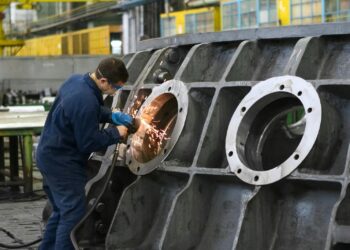Eco living, or green clean living, involves sustainable practices that reduce environmental impact, such as using renewable energy and minimizing waste. For businesses, especially in the Asia Pacific, adopting eco living can enhance brand reputation and open new markets. This is vital as the 2025 SDG Progress Report by ESCAP indicates the region is off track, with only 14.4% progress achieved by 2023, highlighting the urgency for corporate action.
Trending Topics and Business Opportunities
Key trends for 2025 include renewable energy, sustainable transportation, and circular economy practices. Businesses can invest in solar projects, develop EVs, or adopt zero-waste models, aligning with consumer demand for sustainability. For example, companies like Sime Darby Plantation are leading in sustainable palm oil, while EV manufacturers like BYD are expanding in the region.
Influencers and Links
Influencers like Nadine Chandrawinata (Indonesia) and Melissa Ann Tan (Malaysia) are raising awareness through platforms, advocating for climate action and sustainable fashion. Links to their work and resources, such as Sime Darby Sustainability and Fashion Revolution, provide further insights for businesses.
Survey Note: Comprehensive Analysis of Green Clean Living and Eco Living for Eco-BusinessNews
Introduction and Context
In 2025, eco living has transitioned from a niche interest to a critical imperative, particularly for businesses in the Asia Pacific region. Eco-Business.com, a leading media and business intelligence organization dedicated to sustainable development and ESG performance, serves as a platform for exploring how businesses can integrate green clean living into their strategies. The term “eco living” encompasses sustainable lifestyles and environmentally friendly practices, while “green clean living” emphasizes reducing environmental impact through clean technologies and sustainable choices. Given the region’s focus, this analysis aligns with Eco-Business.com’s mission to inform and inspire sustainable business practices.
The urgency of this shift is underscored by recent statistics. The 2025 SDG Progress Report by the UN Economic and Social Commission for Asia and the Pacific (ESCAP) reveals that the Asia-Pacific region is significantly off track in achieving the Sustainable Development Goals (SDGs), with only 14.4% of the necessary progress achieved by the midpoint of 2023. Additionally, climate change poses a severe threat, with projections indicating a potential 17% GDP drop by 2070 under a high emissions scenario, escalating to 41% by the end of the century, as per the Asia-Pacific Climate Report 2024. These figures highlight the critical need for businesses to integrate sustainability into their core operations, leveraging emerging trends in eco living to create a greener future.
Trending Topics in Eco Living for 2025
This section explores the key trends in eco living for 2025, focusing on their relevance to businesses and opportunities for integration. Each trend is analyzed for its importance, business applications, and connection to influential figures in the Asia Pacific region.
1. Renewable Energy
- Description: The shift towards solar, wind, and other renewable energy sources is accelerating, driven by technological advancements and decreasing costs. In 2025, solar and wind energy are expected to be the most popular forms due to their efficiency and accessibility, as noted in sustainability trend reports.
- Importance: Renewable energy reduces carbon emissions, mitigates climate change, and decreases dependence on finite fossil fuels, aligning with global and regional sustainability goals.
- Business Opportunities: Companies can invest in renewable energy projects, develop green technologies (e.g., solar panels, wind turbines), or adopt energy efficiency solutions for their operations. For instance, businesses can partner with tech firms to integrate renewable energy into their supply chains, reducing operational costs and enhancing ESG scores.
- Influencers/Leaders: In Asia Pacific, companies like Sime Darby Plantation are leading in sustainable practices, particularly in transparent supply chains for palm oil, as detailed in their sustainability reports. Tech firms like Huawei are also innovating in renewable energy solutions, contributing to regional energy transitions.
- Links and Resources: For further reading, explore Sime Darby Sustainability and Renewable Energy Asia Pacific.
2. Sustainable Transportation
- Description: The rise of electric vehicles (EVs), e-bikes, and shared micromobility services is transforming urban mobility, with a focus on reducing reliance on fossil fuel-based transport.
- Importance: Sustainable transportation reduces air pollution and greenhouse gas emissions, promoting healthier cities and aligning with climate goals. It also addresses urban congestion, a significant issue in Asia Pacific megacities.
- Business Opportunities: Opportunities abound in EV manufacturing (e.g., BYD in China), charging infrastructure development, and logistics optimization for last-mile delivery. Businesses can also invest in fleet electrification or partner with mobility service providers to offer green transport options.
- Influencers/Leaders: Tesla’s expansion into Asia Pacific markets is notable, alongside local leaders like BYD Auto, which is a major player in EVs and batteries, as seen in their market reports. Corporate leaders like Simon Bennett from The China Navigation Company are also driving sustainable shipping practices.
- Links and Resources: Explore Tesla Asia Pacific and BYD Auto for insights into EV trends.
3. Green Building and Architecture
- Description: This trend involves designing and constructing buildings that are energy-efficient, use sustainable materials, and minimize environmental impact, often certified under standards like LEED.
- Importance: Green buildings reduce energy consumption, lower operational costs, and create healthier living environments, contributing to urban sustainability in densely populated Asia Pacific cities.
- Business Opportunities: Businesses can invest in green building materials (e.g., bamboo, recycled steel), sustainable architecture firms, or certification programs like LEED. Real estate developers can also market green buildings to attract eco-conscious tenants.
- Influencers/Leaders: Architects like Ken Yeang from Malaysia are renowned for their bioclimatic designs, as seen in projects like the Menara Mesiniaga. Companies like City Developments Limited (CDL), led by Esther An, are setting benchmarks with sustainable urban developments, as highlighted in their sustainability reports.
- Links and Resources: Visit Ken Yeang Architecture and LEED Certification for more details.
4. Circular Economy
- Description: A system focused on eliminating waste by designing products for reuse, recycling, or biodegradability, emphasizing a closed-loop approach to resource management.
- Importance: It minimizes environmental impact, maximizes resource efficiency, and aligns with zero-waste goals, addressing waste management challenges in Asia Pacific.
- Business Opportunities: Companies can develop recycling programs, product take-back schemes (e.g., Patagonia’s Worn Wear), or adopt circular design principles. Manufacturing firms can also explore remanufacturing and upcycling to reduce waste.
- Influencers/Leaders: Patagonia’s Worn Wear program is a global example, while local initiatives in Asia Pacific, such as those by Unilever, are gaining traction. Corporate leaders like Pamela Mar from Fung Group are driving circular economy practices in supply chains.
- Links and Resources: Check out Patagonia Worn Wear and Circular Economy Asia for case studies.
5. Plant-Based Diets
- Description: The growing popularity of vegetarian and vegan diets as a response to environmental concerns about meat production, driven by consumer demand for sustainable food options.
- Importance: Plant-based diets reduce the carbon footprint of food systems, promote sustainable agriculture, and address health concerns, aligning with regional sustainability goals.
- Business Opportunities: Opportunities include developing plant-based food products (e.g., Beyond Meat), alternative protein sources (e.g., insect farming), and sustainable farming practices. Food retailers can also expand plant-based offerings to meet consumer demand.
- Influencers/Leaders: Global brands like Beyond Meat and Impossible Foods are expanding into Asia Pacific, alongside local startups like Eat Just (NotCo). Influencers like Shweta Kataria, though not region-specific, advocate for sustainable diets on social media.
- Links and Resources: Explore Beyond Meat and Impossible Foods for product insights.
6. Smart Homes
- Description: The integration of technology (e.g., IoT devices) to optimize energy use and enhance sustainability in residential settings, often through smart thermostats and energy management systems.
- Importance: Smart homes reduce energy waste, lower utility costs, and improve quality of life, contributing to regional energy efficiency goals.
- Business Opportunities: Tech companies can develop smart home devices (e.g., Nest thermostats), energy management systems, or IoT solutions for homes. Real estate developers can also integrate smart home technologies to attract eco-conscious buyers.
- Influencers/Leaders: Google’s Nest and Philips Hue are global leaders, while local tech firms in Asia Pacific, such as those in Singapore’s smart nation initiative, are innovating in this space. Corporate leaders like Ellie Tang from New World Development are driving smart building solutions.
- Links and Resources: Visit Nest and Philips Hue for technology insights.
7. Biodiversity Conservation
- Description: Efforts to protect and restore natural ecosystems, including forests, wetlands, and marine environments, to preserve biodiversity and ecosystem services.
- Importance: Biodiversity conservation preserves ecosystem services (e.g., pollination, water purification) and supports climate resilience, addressing regional environmental challenges.
- Business Opportunities: Businesses can engage in ecotourism, sustainable forestry (e.g., certified timber), or conservation partnerships with NGOs like WWF. Companies can also integrate biodiversity into their CSR strategies.
- Influencers/Leaders: Conservation organizations like WWF are key players, alongside corporate initiatives such as Unilever’s biodiversity commitments. Local leaders like Dr Lee Hui Mien from Mandai Park Development are driving conservation efforts in Singapore.
- Links and Resources: Explore WWF Asia Pacific and Unilever Sustainable Living for initiatives.
8. Sustainable Fashion
- Description: Fashion practices that prioritize eco-friendly materials, ethical labor, and reduced waste, addressing the environmental impact of the textile industry.
- Importance: Sustainable fashion reduces pollution from textile production, promotes ethical supply chains, and meets consumer demand for eco-conscious clothing, particularly in Asia Pacific markets.
- Business Opportunities: Brands can focus on eco-friendly fabrics (e.g., organic cotton), second-hand clothing markets (e.g., ThredUp), or transparent supply chains. Retailers can also partner with sustainable designers to expand offerings.
- Influencers/Leaders: Global designers like Stella McCartney lead the way, while local influencers like Melissa Ann Tan (Malaysia) advocate for ethical fashion, serving as a country coordinator for Fashion Revolution. Corporate leaders like Janice Lao from Hongkong & Shanghai Hotels Group are integrating sustainable practices into hospitality.
- Links and Resources: Check out Stella McCartney and Fashion Revolution for advocacy.
9. Water Conservation
- Description: Technologies and practices aimed at saving water resources through efficient usage, recycling, and rainwater harvesting, addressing water scarcity in the region.
- Importance: Water conservation ensures sustainable use of this vital resource, addressing scarcity issues in water-stressed regions like Australia and parts of Southeast Asia.
- Business Opportunities: Companies can develop water-efficient appliances (e.g., low-flow toilets), rainwater harvesting systems, or wastewater treatment solutions. Utilities and real estate firms can integrate water-saving technologies into their operations.
- Influencers/Leaders: Global firms like Xylem are leaders in water solutions, while local initiatives in water-scarce regions like Australia, led by figures like Cat (a Brisbane-based influencer), are noteworthy. Corporate leaders like Ma. Victoria Tan from Ayala Corporation are driving water management in the Philippines.
- Links and Resources: Visit Xylem Water Solutions and Water.org for solutions.
10. Community Initiatives
- Description: Local projects such as community gardens, clean-up drives, or sustainability education programs, fostering grassroots engagement in sustainability.
- Importance: These initiatives build a culture of sustainability at the local level, enhancing community resilience and aligning with regional development goals.
- Business Opportunities: Businesses can support community efforts through CSR programs (e.g., IKEA’s community engagement), partnerships with NGOs, or funding local projects. Retailers can also sponsor community gardens or clean-up drives to enhance brand visibility.
- Influencers/Leaders: Local NGOs like The Asia Foundation and businesses like IKEA are key players in community sustainability initiatives. Influencers like Helly Tong (Vietnam) promote community-based eco-friendly practices on social media.
- Links and Resources: Explore IKEA Sustainability and Local NGOs in Asia Pacific for community engagement.
Influencers Shaping Eco Living in Asia Pacific
Eco living influencers play a crucial role in raising awareness and inspiring action, particularly in the Asia Pacific region. Below is a table summarizing key influencers and their contributions:
| Name | Location | Role/Contribution | Platform/Organization |
|---|---|---|---|
| Nadine Chandrawinata | Indonesia | Actress, model, environmental activist, climate advocate | EarthDay.org Ambassador, social media |
| Melissa Ann Tan | Malaysia | Model, environmental activist, sustainable fashion advocate | Fashion Revolution Malaysia, TV host |
| Helly Tong | Vietnam | Model, businesswoman, promotes sustainable living | Social media, eco-friendly initiatives |
| Shweta Kataria | Not specified | Advocates for low-waste, eco-friendly living | Instagram (@shwetakataria_), yoga content |
| Cat | Australia | Minimalist, low-waste lifestyle influencer | Instagram, ethical fashion, recipes |
These influencers leverage their platforms to share practical tips, product recommendations, and personal experiences, inspiring their audiences to adopt greener habits. Additionally, corporate sustainability leaders like Esther An (City Developments Limited), Simon Bennett (The China Navigation Company), and Ma. Victoria Tan (Ayala Corporation), as listed in the Eco-Business A-List, are driving corporate sustainability across the region, providing business-oriented insights into eco living.
Conclusion and Recommendations
As we move deeper into 2025, eco living is no longer a choice but a necessity for businesses aiming to thrive in a rapidly changing world. The trending topics outlined above—renewable energy, sustainable transportation, green building, circular economy, plant-based diets, smart homes, biodiversity conservation, sustainable fashion, water conservation, and community initiatives—offer a roadmap for businesses to align with global sustainability goals while unlocking new opportunities. The statistics are clear: urgent action is needed to address climate change and achieve the SDGs, with annual investment needs for climate adaptation estimated between $102 billion and $431 billion, far exceeding current finance levels.
Businesses that act now will not only meet regulatory expectations but also position themselves as leaders in a rapidly evolving market. By embracing these trends, companies can reduce their environmental footprint, enhance their brand reputation, and contribute to a more sustainable future for the Asia-Pacific region. For inspiration and guidance, look to the influencers and corporate leaders highlighted in this post. They demonstrate that sustainability is not just about compliance but about innovation, opportunity, and creating lasting value.
Key Citations
- Asia-Pacific falling behind on sustainable development and climate targets
- Asia and the Pacific SDG Progress Report 2025
- Asia-Pacific Climate Report: Catalyzing Finance and Policy Solutions
- Who are the most influential corporate sustainability leaders in Asia Pacific? The Eco-Business A-List revealed
- Top 9 Eco-Friendly Lifestyle Influencers in Southeast Asia
- Sime Darby Plantation Sustainability Journey
- Renewable Energy World Asia Pacific
- Tesla Asia Pacific Official Site
- BYD Auto Official Website
- Ken Yeang Architecture Portfolio
- USGBC LEED Certification Program
- Patagonia Worn Wear Initiative
- Circular Economy Asia Platform
- Beyond Meat Products and Information
- Impossible Foods Official Site
- Nest Smart Home Solutions
- Philips Hue Lighting Products
- WWF Asia Pacific Conservation Efforts
- Unilever Sustainable Living Plan
- Stella McCartney Sustainable Fashion
- Fashion Revolution Global Movement
- Xylem Water Solutions and Technologies
- Water.org Water Conservation Initiatives
- IKEA Sustainability and Community Engagement
- The Asia Foundation Community Development



















